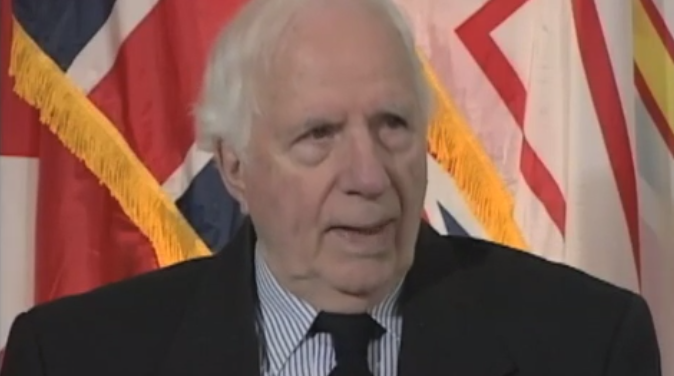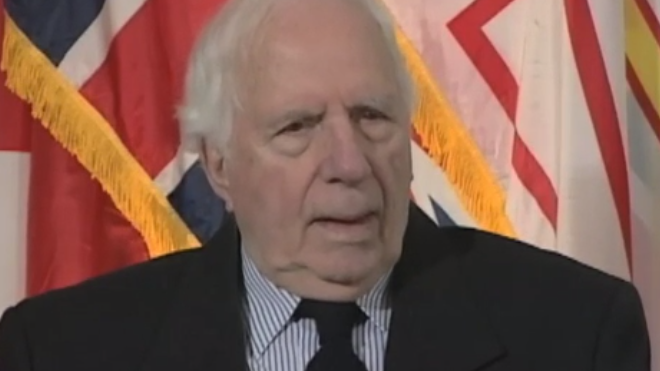Lifeboat and Rescue
Heroes Remember
Lifeboat and Rescue
Interviewer: How long were you in the lifeboat?
Well we were there until about, I think about noon.
Eleven or twelve o'clock in the day.
Peculiar that the boat came along at that time.
You know, we were crossed the path of the boat coming to St. John's.
So I often wonder about that really.
Interviewer: Because it was so lucky?
Well that we were in the position, you know, crossing the paths.
Both of us crossing the same path. You never know.
Interviewer: When you were in the lifeboat,
from early morning till noon,
was there a time that you thought maybe no one was going to
come by to take you men out of the lifeboat?
Well, I never had much time to think about that I guess.
Cause we had fourteen men and we had to keep the lifeboat on the move.
We started to row in towards St. Pierre.
We were going to row, in you know, the best we could.
Interviewer: Seventy miles? You were going to row into St. Pierre?
That's a long way to go.
Well any old port in the storm.
Interviewer: Can you describe the conditions of the sea that morning?
Well there was a little swell, you know, in from the south-east.
Quite harmless. But not much wind.
Interviewer: So there was no doubt in your mind that you were going to be safe.
You were confident that you were going to be rescued?
Oh I think so yeah. We could have rowed to St. Pierre, seventy miles. Yeah.
Interviewer: When the vessel came by, the boat that was
on its way to St. John's, what happened then?
Well we all scrambled up the net, up the side of the ship.
I had a hot coffee or something like that. Yes.
Related Videos
- Date modified:






